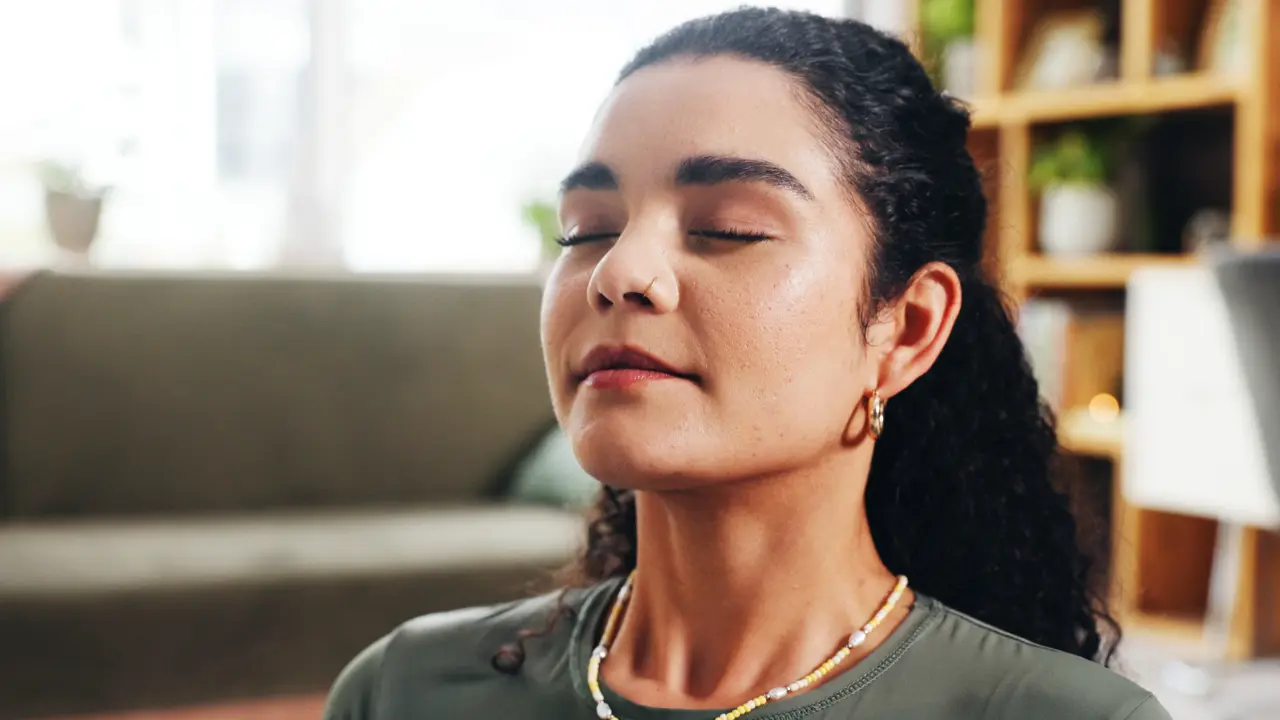What is breathwork, and why should you care? This deliberate breathing practice is increasingly popular because many corporate workers are seeking simple, effective ways to combat stress and improve focus.
According to research published in the journal Complementary Therapies in Medicine, slow breathing, which is the very essence of breathwork, can significantly reduce psychological stress.
As it is essential for mental health at work, in this article, we will explore what breathwork is, detail the proven benefits of controlled breathing, and guide you through simple techniques you can use right now to calm your mind and body.
What is Breathwork?

Breathwork is the practice of consciously and deliberately controlling your breathing pattern to achieve a desired physical, mental, or emotional state. It moves the breath away from its automatic, unconscious function and turns it into an intentional tool.
The reason this works is simple: the rhythm of your breath is directly linked to your Autonomic Nervous System (ANS). ANS plays an essential role in your body; it controls involuntary functions such as heart rate and stress response.
By slowing and deepening your breath, you signal to your ANS that you are safe. It leads your body to switch from the high-alert sympathetic state (fight-or-flight) to the calming parasympathetic state (rest-and-digest).
The goal of breathwork is to enhance mental and physical well-being through conscious breathing control, with primary aims including reducing stress and anxiety, improving emotional regulation, and helping you stay focused during busy work.
What are the Benefits of Breathwork?

The practice of controlling your breath offers rapid and measurable benefits by influencing your internal biology, which, in the larger context, can also help you manage conflict at work.
1. Physical and Emotional Benefits
Breathwork offers an instant reset button for your body’s stress response. By activating the vagus nerve (the main pathway for the parasympathetic system), deep breathing reduces cortisol production.
This measurable physiological change translates directly to emotional regulation and could be anger management strategies, which help you to:
- Reduce Anxiety and Panic: Slow, controlled breaths can immediately interrupt the physical symptoms of anxiety, such as rapid heartbeat and shallow chest breathing.
- Lower Blood Pressure: Consistent practice promotes cardiovascular health by relaxing muscles surrounding blood vessels.
- Alleviate Muscle Tension: When the nervous system calms, tension held in the neck, shoulders, and back often releases.
- Improve Sleep: Focused breathing techniques used before bed signal the body to prepare for rest, helping to quiet a racing mind and promote more profound, more restful sleep.
2. Cognitive and Focus Benefits
The benefits of breathwork extend far into the cognitive realm, enhancing mental performance and clarity, so that you can stop worrying.
- Boost Focus and Concentration: Deep breathing increases the oxygen flow to your brain, which is essential for cognitive function. This boost helps clear mental fog, allowing you to stay focused and efficient during demanding tasks.
- Enhance Emotional Intelligence: By creating a pause between stimulus and response, breathwork gives you the space to process feelings rather than react instantly. This sharpens your emotional intelligence, improving your ability to navigate complex social and professional situations.
How to Practice Breathwork?

You don’t need special equipment or quiet meditation rooms to start. Here are two simple, proven techniques you can use at any occasion, be it at your desk, in traffic, or before bed:
Technique 1: The 4-7-8 Breathing Method
Developed by Dr. Andrew Weil, this relaxation technique serves as a natural tranquilizer for the nervous system, offering excellent stress reduction and support for sleep. Here are the steps of the 4-7-8 breathing method:
- Exhale completely through your mouth, making a whoosh sound.
- Inhale quietly through your nose for a count of four (4).
- Hold your breath for a count of seven (7).
- Exhale completely through your mouth, making a whoosh sound, for a count of eight (8).
- Repeat this cycle for four full breaths.
Technique 2: Box Breathing (Square Breathing)
Used by Navy SEALs and athletes, Box Breathing is highly effective for reducing immediate stress and enhancing concentration under pressure. Here’s how to do it:
- Exhale completely to empty your lungs.
- Inhale slowly and deeply through your nose for a count of four (4).
- Hold your breath for a count of four (4).
- Exhale slowly through your nose or mouth for a count of four (4).
- Hold your breath again (lungs empty) for a count of four (4).
- Repeat this cycle for several minutes until calm is restored.
Ready to Master Your Breath?
Breathwork is a powerful, accessible key to unlocking greater calm, focus, and resilience in your life. By consistently practicing these simple techniques, you actively take control of your nervous system and promote lasting well-being.
However, find that chronic stress, anxiety, or deep-seated emotional challenges persistently undermine your peace of mind, issues that simple techniques alone cannot fully resolve. Professional support can offer invaluable tools and personalized strategies.
If you are struggling with persistent stress, anxiety, or emotional challenges, explore D’Accord OAS’s Counselling services for tailored strategies to help you manage these core issues and achieve sustainable well-being.
You can also contact us through our contact page. D’Accord OAS can provide phone or face-to-face appointments nationwide in Australia.
Frequently Asked Questions (FAQs)
1. What is breathwork, and how does it work?
Breathwork is the intentional control of your breathing pattern. It works by deliberately shifting your nervous system from the stress response (fight-or-flight) to the calming state (rest-and-digest).
2. Why is breathwork so powerful?
It is powerful because it directly influences your Autonomic Nervous System, quickly reducing cortisol (stress hormone) and promoting physical and mental relaxation.
3. What to expect after a breathwork session?
You can expect to feel calmer, more centered, and mentally clearer. Some people may also experience light physical sensations due to increased oxygen flow.
4. How long is a typical breathwork session?
A basic practice can range from a few minutes (3–5 minutes) for an immediate reset, up to 15–30 minutes for a deeper meditative or relaxation session.
5. What not to do after breathwork?
Avoid immediately rushing into high-stress activities. We recommend you take a moment to rest, hydrate, and gently ease back into your tasks to maximize the lasting effects of the calm state.











